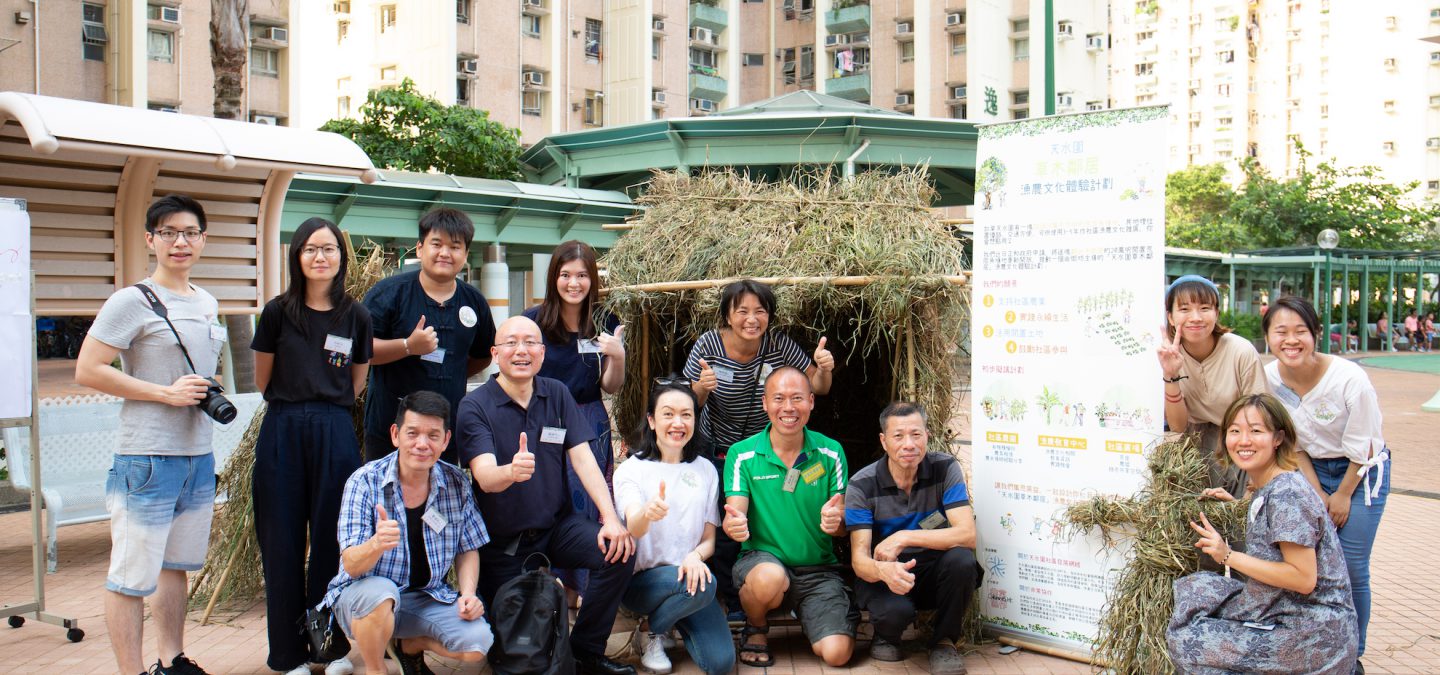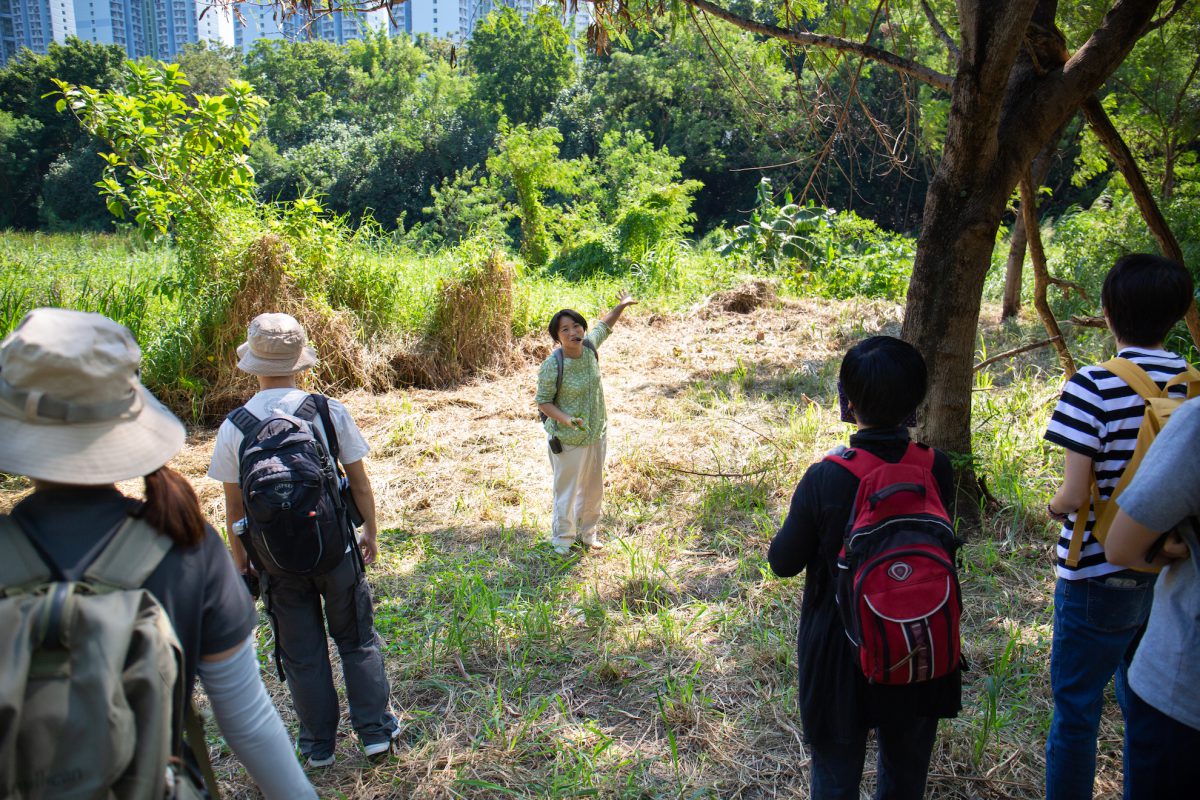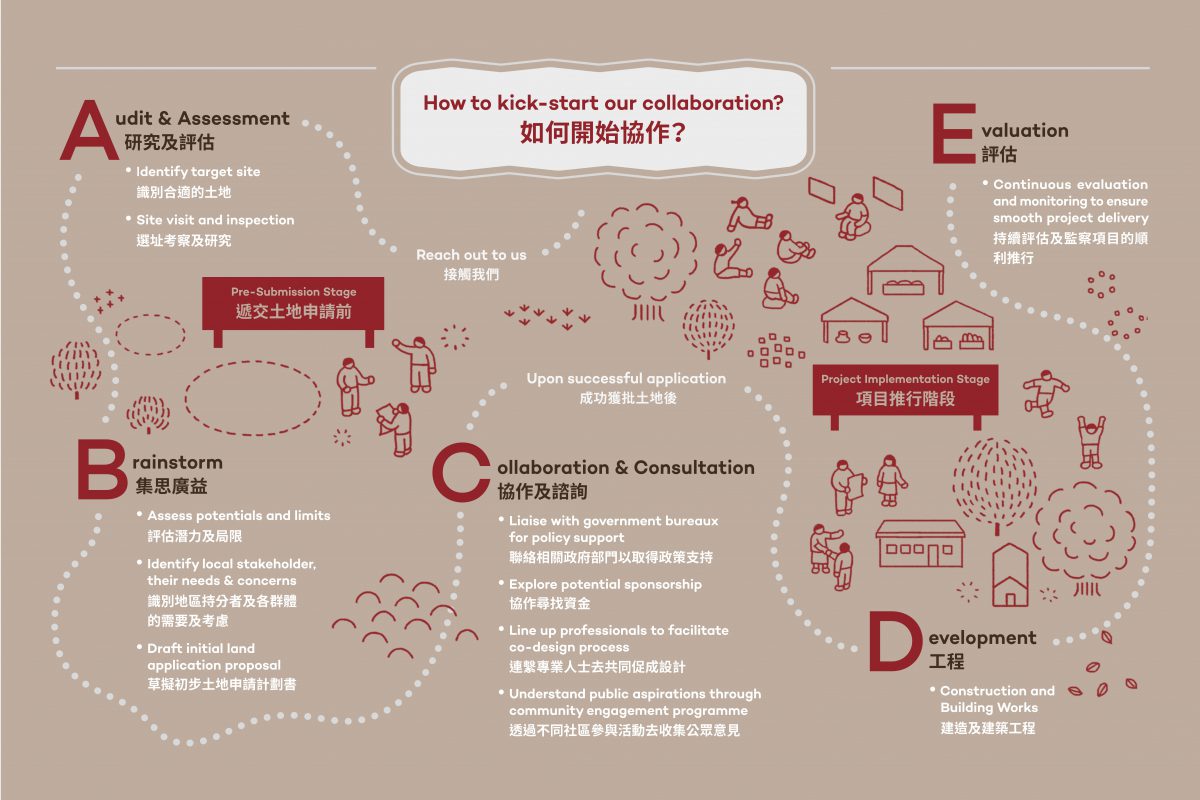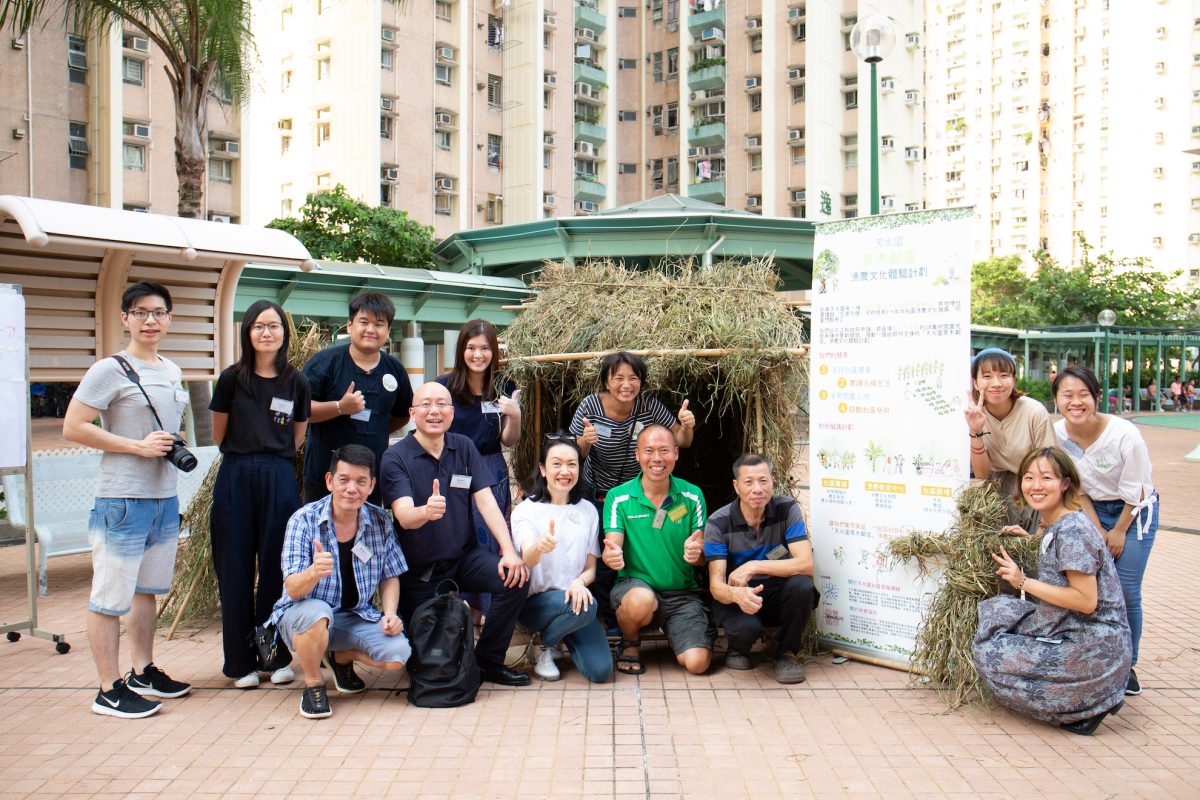
Keep up with our latest news and projects!

‘Placemaking’ initiatives are often temporary and small scale, which aims to test place interventions in response to changing needs. A successful placemaking initiative requires a mix of ingredients – an open-minded decision maker, a passionate community to champion place-based ideas and technical professionals to turn ideas into actions. This ensemble does not happen organically, but demands a concerted effort of a team of people to bring them together.
Three years ago, a not-for-profit organisation, CollaborateHK, was established to finds ways to help community groups launch their placemaking projects. With years of experience in organising district-wide placemaking events in Hong Kong, the founders of CollaborateHK came across many passionate community groups that were looking for physical locations to realise place-based ideas; as well as some private investors they met who were interested in funding community projects. Coincidentally, in 2018 the government released a list of unused public sites that are available for short-term leases (up to seven years). That year, the CollaborateHK founders came up with an idea to set up a platform to connect community groups with funders and most importantly, provide them with a pathway to apply for the unused government land.
 A site visit to an unused government site with interested community groups
A site visit to an unused government site with interested community groups
Contrary to popular belief, Hong Kong does not lack vacant land. In 2018, the Government released a list of 800 unused government land that were available for up to seven years of lease. However, the application procedure was too technical and bureaucratic for any community groups to come close to a successful application. Apart from the long list of sites, the government did not provide any assistance or plain language information to help community groups to get through these application hurdles. The real challenge is, how can we empower community members to put their ideas into technical plans and proposals that can secure government approvals for short-term land leases?
Seeing the gap between available public resources and the passion from community members, CollaborateHK was the first not-for-profit organisation to propose a way to connect the two. They proposed a framework that streamlines the application process and channelled professional knowledge and investment to help community groups apply for these government short-term leases to realise their placemaking ideas.
 A workflow map illustrating how CollaborateHK helps community organisations apply for government sites
A workflow map illustrating how CollaborateHK helps community organisations apply for government sites
CollaborateHK was not part of a government initiative, but rather a bottom-up approach to bring available resources together. Sitting behind the team of four is a network of like-minded professionals, funders, community groups and government agencies that came together and endorsed a collaborative framework proposed by CollaborateHK (an illustrative workflow is shown in Figure 2). The CollaborateHK team held strong relationships with the government, private funders and community members, which enabled them to act as a broker between all parties. CollaborateHK fills the gaps in the bureaucratic system – from providing plain language information, to writing application proposals; from public engagement to solicit funding; they hold the hands of community members all the way to successfully obtaining government approvals and permits for short-term leases.
the CollaborateHK platform bridged the gap between community groups, professionals and the government. With their help, community groups are able to translate the neighbourhood’s aspiration into a doable, implementable proposal that fits in the government’s statutory framework.
After three years of hard work, CollaborateHK gained overwhelming support from community partners, professional institutes, academia, businesses and the government. The platform has incubated over 100 neighbourhood improvement ideas in Hong Kong. Two community groups have successfully secured short term leases to establish the city’s first photography education centre and a community permaculture farm.
 A photo taken from a public engagement event for the Tin Shui Wai permaculture farm.
A photo taken from a public engagement event for the Tin Shui Wai permaculture farm.
Project Champion: Hong Kong International Photo Festival, a photography enthusiasts and arts festival organisers
Project Champion: Tin Shui Wai Community Development Network, a not-for-profit organisation
Crystal Chan, having lived in Sydney, London and New York, joined Collaborate Hong Kong as a Senior Manager in 2017 to bring alive placemaking projects for her beloved home city. Driven by a professional background in urban planning and versatile experience in community engagement, Crystal puts “people” at the centre of every project through empowering communities with a voice that impacts real action plan.
Tiffany Tang, born and raised in Hong Kong, is an experienced placemaker and community engagement specialist. She has honed her skills in placemaking through working across South East Asia: empowering local communities to capture, retain, and value their cultural heritage, and develop their identity and sense of place. Tiffany has recently moved to Australia, working as an engagement consultant at Capire Consulting Group. She has written this article through the lens of both a Hong Konger and a Melburnian. Her insight is that bottom-up placemaking is often easier said than done; it takes a group of people with true dedication and their love for the community to break the urban planning silos. Not many have succeeded, CollaborateHK is one of the very few.